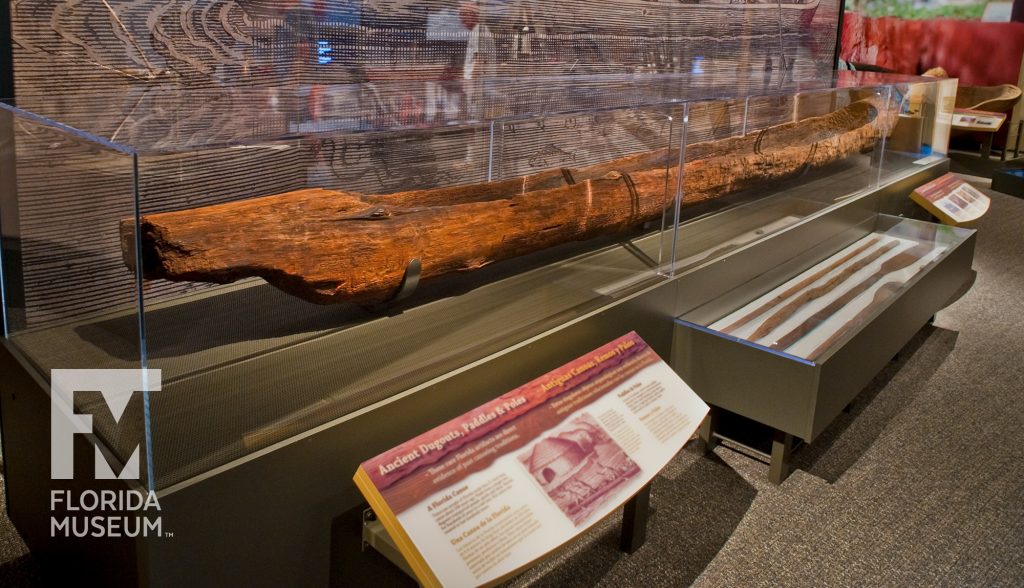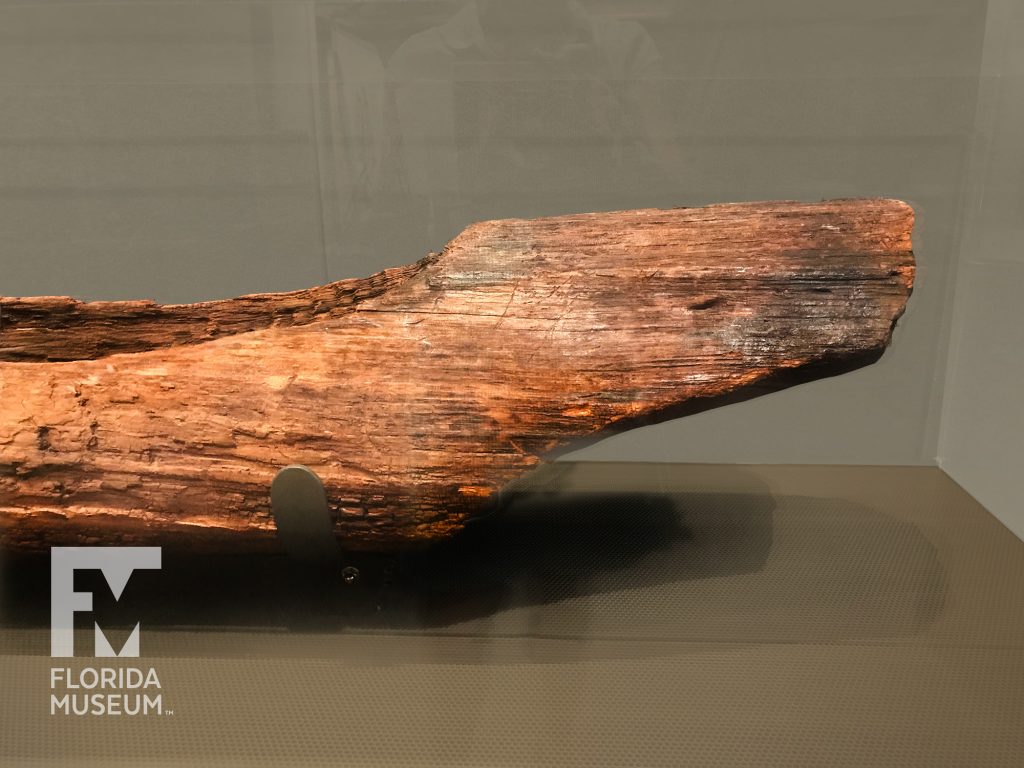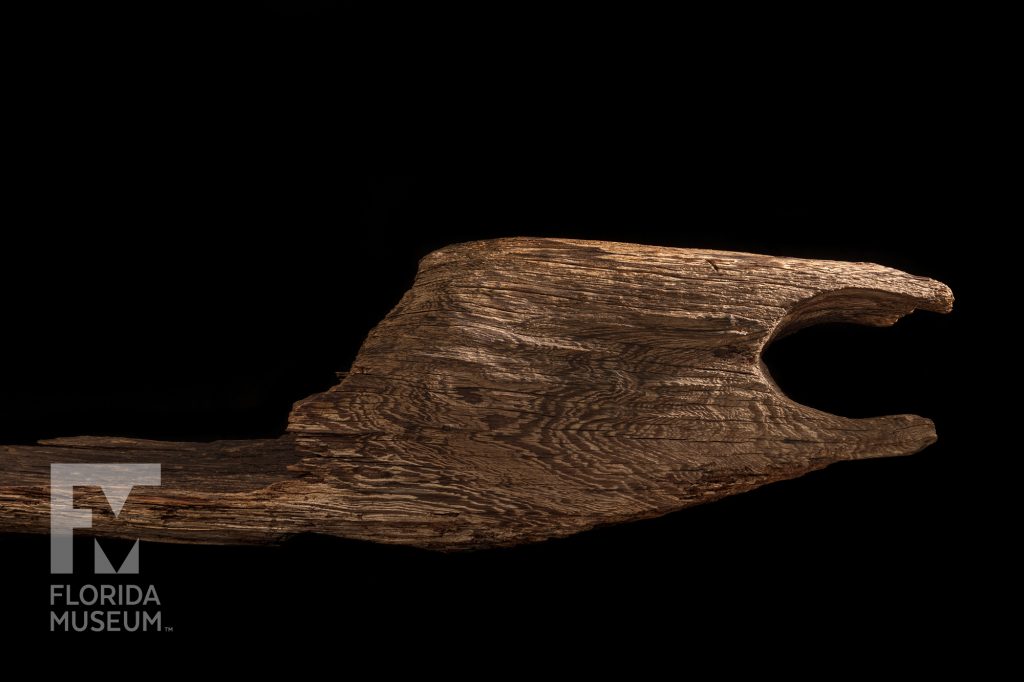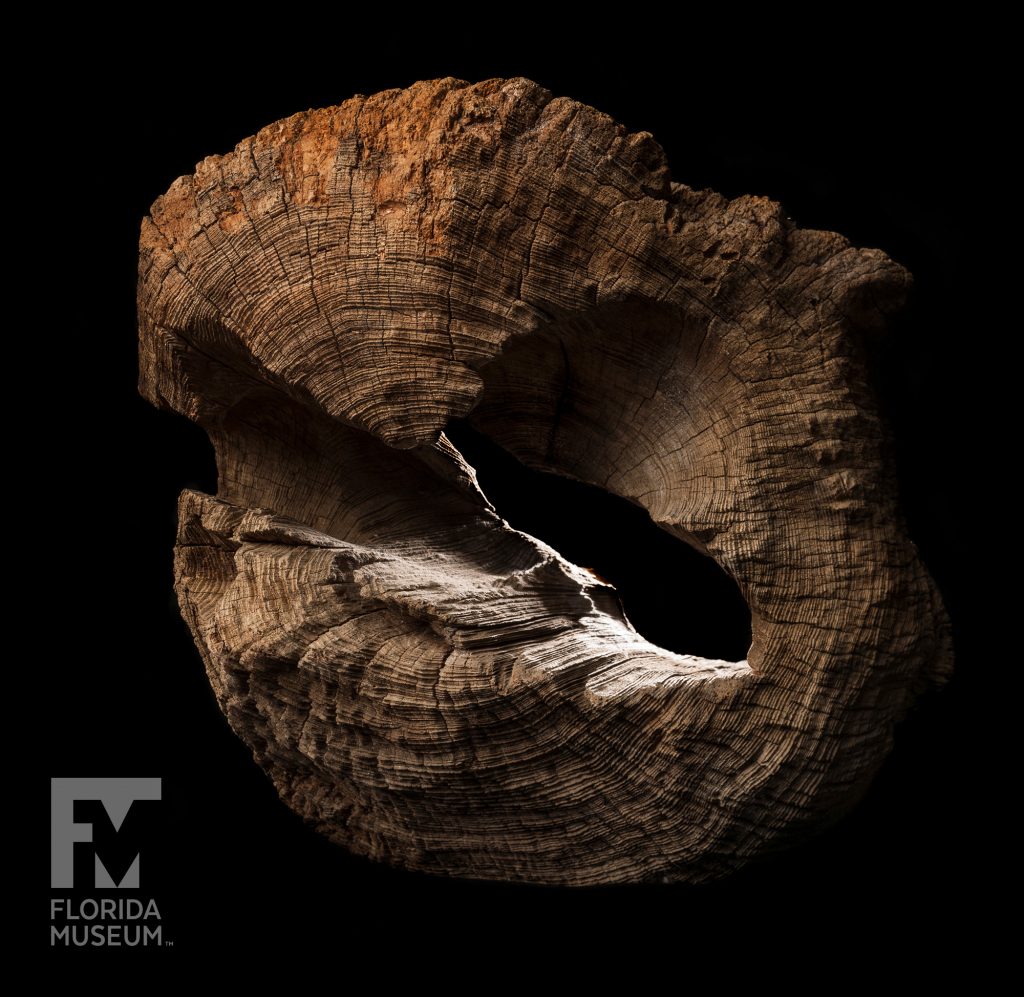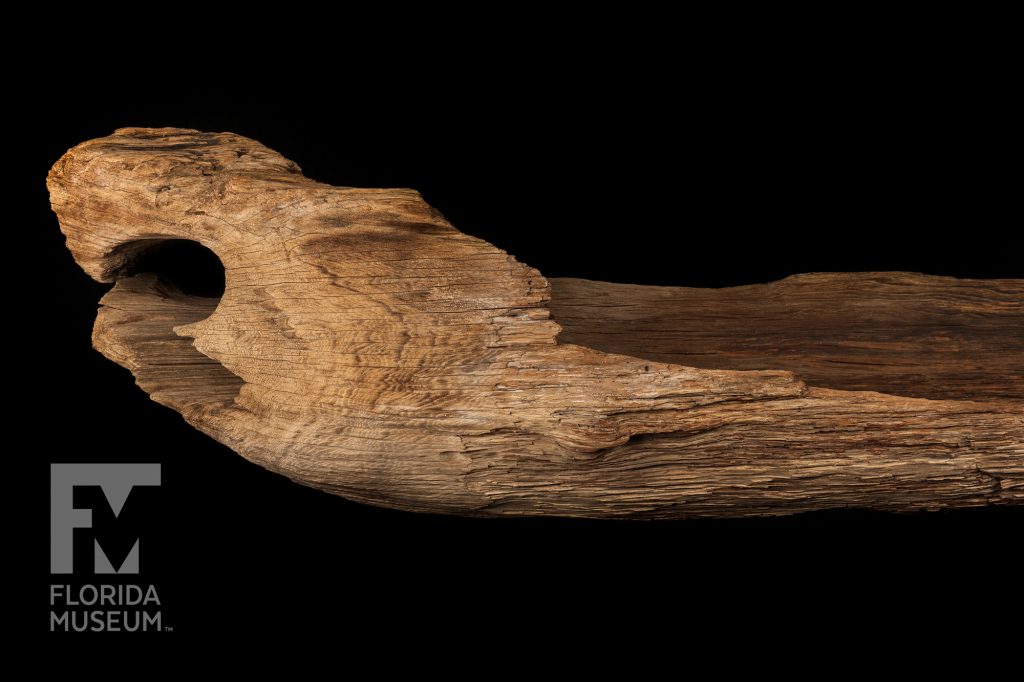Dugout Canoes, carved out of a single log, have had the same basic design for the past 7,000 years. Timucuan people of Florida made this 21-foot-long canoe about 500 years ago. Made from a single tree, dugouts transported people, goods, and ideas.
Summary
On Exhibit
Pine Canoe
From Putnam Co., Florida
Dates to ~AD 1450-1650
Paddles and Poles
Pine Paddle, Florida, ~260 BC
Forked Pole, Florida, Precolumbian
Poling Stick, Putnam Co., Florida, AD 1330–1480
Wood Paddle, Putnam Co., Florida, Precolumbian
Additional Website Photos
Withlacoochee River Canoe
Found in Marion Co., Florida
Dates to ~450 years ago
Collection
Story
Florida has one of the richest documented archaeological records of dugout canoes in the country, with almost 400 recorded canoes from over 235 sites. The majority have been recorded from North Central Florida, also known as the lake district, but they have been found as far south as the Florida Keys and as far north as the Panhandle, as well as along various river banks.
Most Florida canoes through time have a fairly similar design with a not-too-dissimilar shape to the bow and stern. A few have exhibited a more prominent platform prow. Most appear, however, as if they could have been used to paddle and pole through Florida’s relatively shallow waters and marshes from either end. They have ranged in length from approximately 9 feet to 27 feet long, with the longest found along the shores of the Gulf of Mexico that was measured over 40 feet as it was missing part of its stern.
Overall these canoe trees have been made from pine or cypress and crafted with stone or shell tools until the contact period when they were crafted with metal tools. The sharp metal tools leave distinct squared edges in the wood versus the more rounded depression left by shell and stone woodworking tools such as axes, adzes and gouges.
Dugout Canoes: Paddling Through the Americas, a traveling exhibit designed the by Florida Museum, was inspired by a rare find of 101 ancient dugouts found along the exposed shoreline of Newnans Lake here in Gainesville, Florida, in the summer of 2000 when we were experiencing a severe drought. As the dugouts’ history was being unfolded one by one, so was the larger story. The oldest Florida canoe dates to approximately 7,000 years ago from DeLeon Springs – those from Newnans Lake ranged from 400 to almost 5,000 years ago.
Using various traditional and innovative methods, we are testing green solutions to preserve these dried, large, unique artifacts. In addition, a new application for these wooden canoes involves isotopic analysis to see if we can source where canoe trees grew versus where they were found archaeologically. The latter, minimally, is aiding us in looking at these rare biological and cultural treasures, Florida’s ancient watercraft, to learn more about past travel, trade and migration as well as changing environments.
Donna Ruhl
Collections Manager, Florida Archaeology and Bioarchaeology*
Archaeobotanist, Environmental Archaeology*
Florida Museum of Natural History
Additional Information
Withlacoochee River Canoe
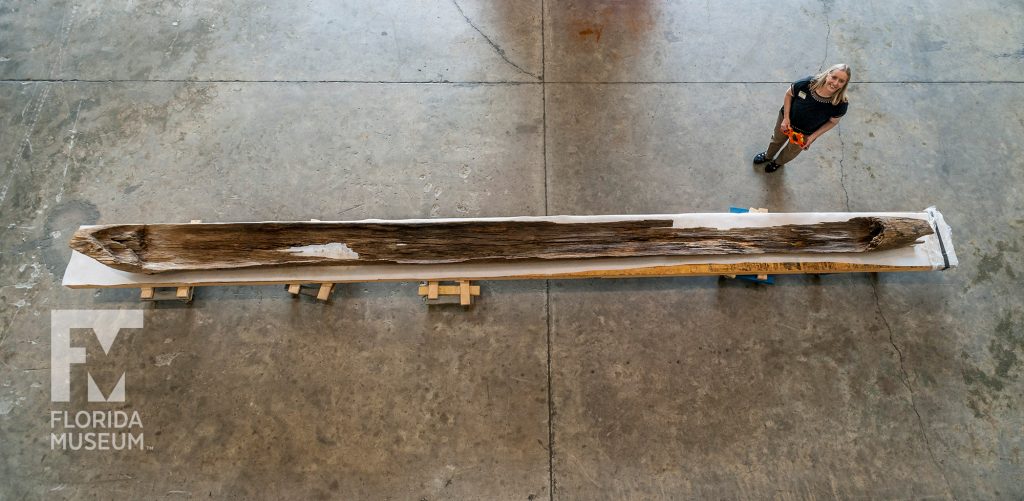
This unique dugout canoe is among the largest known from Florida’s interior waterways at almost 27 feet. It was recovered back in the 1960s by an avocational archaeologist along the banks of the Withlacoochee River. It is not one of Florida’s oldest, which date back almost 7,000 years ago, but a good example of the long history of Florida’s ancient watercraft. This particular canoe dates to roughly 400 years ago – made of cypress, crafted with metal tools – and exhibiting some of the most rare features we have seen to date on any of Florida’s dugout canoes as it has a hole in both the bow and the stern. This has suggested to many that it was crafted as an outrigger or possibly even a catamaran, which none of the almost 400 canoes from over 235 sites recorded from around the state have displayed. This dugout was transferred to the Florida Museum from the Silver River Museum where it had been for decades. It is part of the Florida Museum’s ancient watercraft survey and research initiative where we and other colleagues have been documenting exposed dugouts on lakebeds and other waterways due to the severe droughts that have impacted the Eastern United States over the past decade or so and have developed green methods to stabilize these large, dried, wood artifacts.
Exhibit
On display Sept. 23, 2017-Jan. 7, 2018, Rare, Beautiful & Fascinating: 100 Years @FloridaMuseum celebrated the Museum’s rich history. Each Museum collection was asked to contribute its most interesting items and share the stories that make them special. Though the physical exhibit is closed, this companion website remains online, providing an opportunity to experience the Florida Museum’s most treasured specimens.
Exhibit Area: Objects Tell Stories
Theme: Precolumbian Florida
 Want to see more? Explore more than 300 breathtaking color photos of plants, animals, fossils and cultural heritage materials from the Florida Museum of Natural History’s collections in the award-winning book All Things Beautiful available from the University Press of Florida.
Want to see more? Explore more than 300 breathtaking color photos of plants, animals, fossils and cultural heritage materials from the Florida Museum of Natural History’s collections in the award-winning book All Things Beautiful available from the University Press of Florida.
*This title was accurate at the time the exhibit was on display in 2017. Please visit the collection website to verify current staff and student information.
